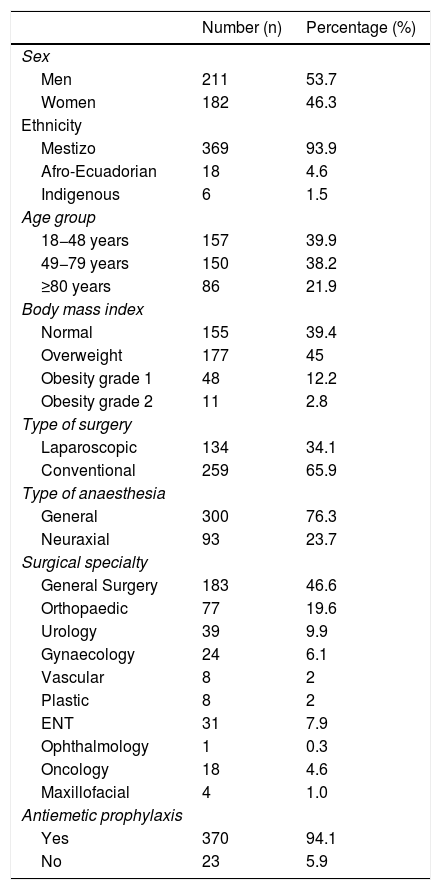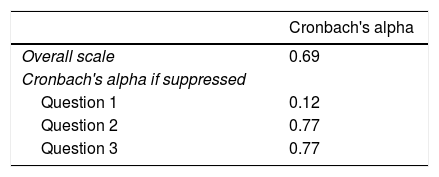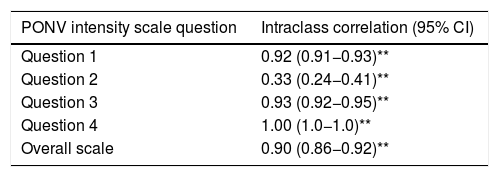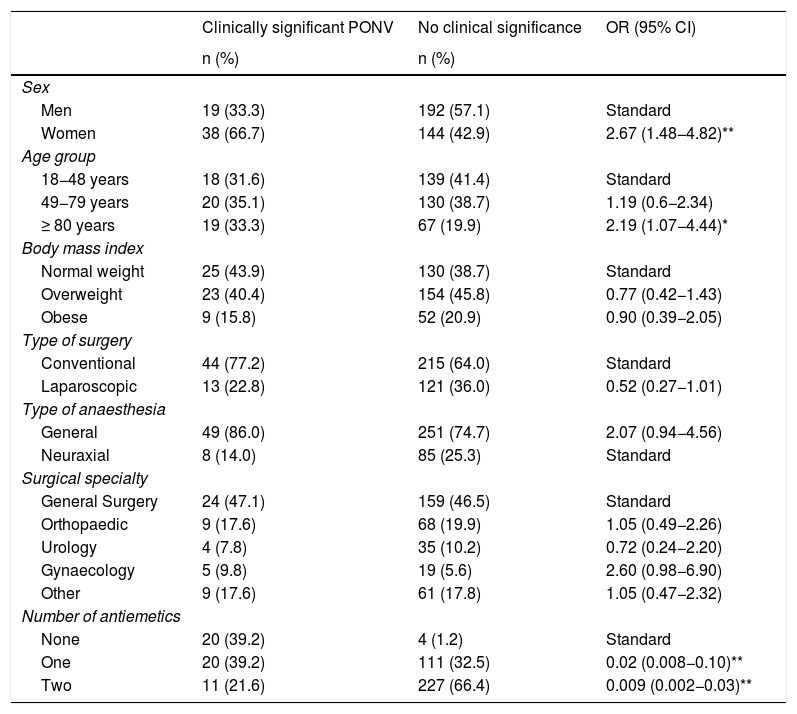Postoperative nausea and vomiting (PONV) is a common problem in patients undergoing surgical procedures, generating patient dissatisfaction and increasing hospital costs. The Postoperative Nausea and Vomiting Intensity Scale identifies clinically significant cases; however, it has not been validated in Spanish.
ObjectiveTo carry out a cross-cultural adaptation of the PONV Intensity Scale into Spanish and validate it for use in the postoperative period of patients undergoing elective non-cardiac and non-intracranial surgery.
Materials and methodsCross-sectional validation study of a diagnostic test. The NVPO Intensity Scale was culturally adapted to Spanish and administered to 393 adult hospitalized patients at 6 postoperative hours. The data were compared with the Apfel Scale and nausea measured on a visual analogue scale (VAS). Internal consistency and inter-observer concordance were calculated.
Results59.8% of patients presented NVPO, of which 14.5% were clinically significant. An acceptable internal consistency was obtained for the NVPO Intensity Scale (Cronbach's alpha 0.7) and a high inter-observer correlation (Kappa 0.9, 95% CI 0.86−0.92), statistically significant, for the overall scale. The correlation with VAS was high (Rho Spearman 0.9). The mean VAS and Apfel scale score was significantly higher in patients with clinically significant PONV.
ConclusionsThe PONV Intensity Scale adapted to Spanish is a valid and reliable instrument for monitoring and evaluating postoperative nausea and vomiting.
Las náuseas y vómitos postoperatorios (NVPO) representan un problema usual en los pacientes sometidos a procedimientos quirúrgicos, generando insatisfacción del paciente e incremento de costes hospitalarios. La Escala de Intensidad de Náusea y Vómito Postoperatorio identifica casos clínicamente significativos; sin embargo, no ha sido validada al español.
ObjetivoRealizar una adaptación cultural de la Escala de Intensidad de NVPO al español y validarla para su uso en el postoperatorio de los pacientes sometidos a cirugía electiva no cardiaca y no intracraneal.
Materiales y métodosEstudio transversal de validación de una prueba diagnóstica, donde se realizó la adaptación cultural de la Escala de Intensidad de NVPO al español, y se aplicó a 393 pacientes adultos hospitalizados a las 6 horas del postoperatorio. Los datos fueron comparados con la Escala de Apfel y la Escala Visual Análoga de Náusea (EVA). Se calculó la consistencia interna y concordancia inter-observador.
ResultadosEl 59,8% de los pacientes presentaron NVPO y en un 14,5% fueron clínicamente significativas. Se obtuvo una consistencia interna aceptable para la Escala de Intensidad de NVPO (alfa de Cronbach 0,7) y una alta correlación inter-observador (Kappa 0,9, IC95% 0,86−0,92), estadísticamente significativa, para toda la escala. La correlación con la EVA fue alta (Rho Spearman 0,9). La media de EVA y de la escala de Apfel fue significativamente mayor en los pacientes con NPVO clínicamente significativos.
Conclusionesla Escala de Intensidad de NVPO adaptada al español es un instrumento válido y confiable de monitorización y de evaluación de las náuseas y vómitos posoperatorios.












